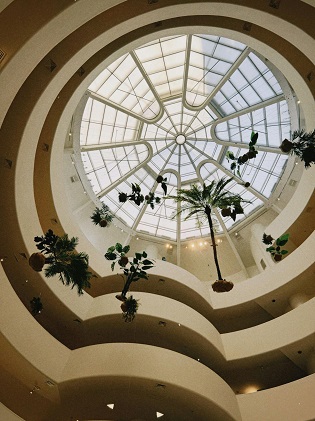Cultural institutions have undergone a quiet revolution. A growing number of museums have shifted from static halls of artifacts to dynamic spaces that invite participation. Visitors now stand inside reconstructed historical scenes or navigate virtual worlds, turning what was once passive learning into an active encounter. This shift raises questions about the value and purpose of museums in a world where attention is limited but experiences are increasingly immersive.
In these new environments, some people may find guides and tickets through traditional platforms, or even stumble upon this website that offers access to diverse services such as interactive games and live events. Yet the rise of immersive museums remains rooted in a deep cultural shift rather than commerce alone.
Contents
The Shift Toward Immersion
Museums once built their authority on rarity and preservation. They were places to display objects deemed significant—fossils, statues, ancient scripts—and to encourage careful observation. The audiences were encouraged to be quiet and thoughtful, and the displays rarely changed. But the advent of digital culture brought a shift in user expectations. People grew accustomed to seeing information move and respond. In other settings, they pressed buttons and things happened. Static objects behind glass did not feel as compelling.
Immersive museums emerged as an answer to this change. Instead of presenting a bowl from antiquity, a museum might now allow a visitor to step into a simulation of an ancient kitchen. Rather than showing paintings in silence, curators may add audio, smell, or augmented reality layers that revitalize how people interpret the artwork. The museum becomes a stage, the visitor an actor.
The shift reflects a larger trend: rather than being spectators, audiences want to be part of the narrative. Immersive museums let them do that without compromising historical or cultural content. With new tools, curators can reveal context, movement, and consequence—elements that static displays struggle to convey.
Technology as a Cultural Partner
Technological change has been the key partner in this evolution. Projection mapping, virtual reality, motion sensors, and mobile apps have all contributed to turning museum spaces into live environments. These tools make the experience fluid and allow for different ways of interacting with the same material.
For example, a virtual reality headset lets someone walk through a destroyed city, experiencing the dimensions and perspectives that photographs cannot express. Interactive touchscreens might allow users to explore data or relate stories at their own pace. Sensors pick up movement, triggering lights or sound, making even motion a form of communication.
This does not mean that all traditional museum practices vanish. Many institutions still preserve artifacts in conventional forms, but technology gives them pathways to expand. The digital layers offer explanations and connections that cannot come from text panels alone.
New Audiences, New Expectations
The drive toward immersive experiences reflects not just technological possibility, but also user demand. Today’s visitors, especially younger ones, are more inclined to value hands-on learning and emotional engagement. A trip to a museum competes with movies, games, and social media feeds. Static exhibitions may satisfy committed learners, but immersion attracts broader audiences.
Immersive museums appeal to multiple senses and encourage exploration. The user does not just look—they listen, move, react. The exhibit becomes a personal journey rather than a set of facts. This way of interacting aligns with how many people now process information outside museums. Knowledge is no longer delivered one-way; it is constructed in real time by the person engaging with the content.
This broader engagement aims to build personal investment. When a visitor manipulates a virtual object or participates in a reconstructed scene, they remember it differently. What could have been a school trip becomes something closer to an adventure.
Balancing Engagement and Education
Some critics question whether immersive museums prioritize spectacle over substance. The risk is real: when the experience becomes too focused on entertainment, the intellectual or cultural value may fade. Audiences could walk away remembering the simulated rainstorm but forget the historical meaning behind it.
The challenge is balance. Immersion must serve interpretation, not overshadow it. Good immersive design helps visitors understand the social, political, or artistic importance of what they are seeing. It should offer layers—visual excitement for those who want to skim, and deeper context for those who want to dig in.
This balance requires careful planning. Curators must decide how much control to give visitors and how to guide their attention. They need to blend storytelling with accuracy, and interaction with respect for the original material.
The Democratization of Experience
Immersive museums also raise interesting questions about access. They can be more inclusive in some ways. The use of multisensory experiences can help people with different abilities engage with exhibits. For example, audio descriptions can aid visually impaired visitors, while tactile models support those who learn by touch.
Yet, immersive designs can also be costly. Not every community can support high-tech installations. The digital divide remains a barrier. For broad democratization to succeed, creators must think beyond big cities and wealthy patrons. Some museums experiment with mobile immersion—pop-up events or low-cost VR apps that bring similar experiences to schools or public spaces.
In a global sense, immersive museums offer a template for remote-cultural exploration. When physical travel is difficult or impossible, virtual access gives wider audiences the chance to experience heritage and art.
A New Role for Institutions
The rise of immersion forces museums to reconsider their purpose. They are no longer just guardians of objects. They are also designers of experiences. Curators now collaborate with digital artists, engineers, and programmers. Preservation meets performance.
In this model, museums become active agents in knowledge production. They do not only show what is known—they help people discover, question, and feel. The institution becomes a platform for both memory and imagination.
Ultimately, immersive museums reflect a broader cultural shift in how society relates to knowledge. The value of information lies not only in what we know, but in how we experience it.
